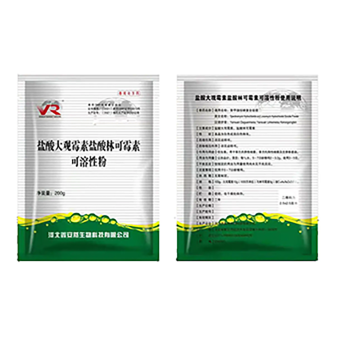- Afrikaans
- Albanian
- Amharic
- Arabic
- Armenian
- Azerbaijani
- Basque
- Belarusian
- Bengali
- Bosnian
- Bulgarian
- Catalan
- Cebuano
- Corsican
- Croatian
- Czech
- Danish
- Dutch
- English
- Esperanto
- Estonian
- Finnish
- French
- Frisian
- Galician
- Georgian
- German
- Greek
- Gujarati
- Haitian Creole
- hausa
- hawaiian
- Hebrew
- Hindi
- Miao
- Hungarian
- Icelandic
- igbo
- Indonesian
- irish
- Italian
- Japanese
- Javanese
- Kannada
- kazakh
- Khmer
- Rwandese
- Korean
- Kurdish
- Kyrgyz
- Lao
- Latin
- Latvian
- Lithuanian
- Luxembourgish
- Macedonian
- Malgashi
- Malay
- Malayalam
- Maltese
- Maori
- Marathi
- Mongolian
- Myanmar
- Nepali
- Norwegian
- Norwegian
- Occitan
- Pashto
- Persian
- Polish
- Portuguese
- Punjabi
- Romanian
- Russian
- Samoan
- Scottish Gaelic
- Serbian
- Sesotho
- Shona
- Sindhi
- Sinhala
- Slovak
- Slovenian
- Somali
- Spanish
- Sundanese
- Swahili
- Swedish
- Tagalog
- Tajik
- Tamil
- Tatar
- Telugu
- Thai
- Turkish
- Turkmen
- Ukrainian
- Urdu
- Uighur
- Uzbek
- Vietnamese
- Welsh
- Bantu
- Yiddish
- Yoruba
- Zulu
Th11 . 19, 2024 08:25 Back to list
Injectable Oxytetracycline Hydrochloride for Veterinary Use and Infection Treatment
Oxytetracycline hydrochloride injectable An Overview
Oxytetracycline hydrochloride is a broad-spectrum antibiotic that belongs to the tetracycline class of antibiotics. It is primarily used in the treatment of various bacterial infections in humans and animals. This injectable form of the drug offers versatile therapeutic applications, especially in cases where oral administration may not be feasible or effective.
Mechanism of Action
The primary mechanism by which oxytetracycline exerts its bactericidal effect is by inhibiting protein synthesis in bacteria. It does this by binding to the 30S ribosomal subunit, thereby preventing the attachment of aminoacyl-tRNA to the ribosomal mRNA complex. This action effectively halts the production of proteins essential for bacterial growth and reproduction, leading to the eventual death of the bacterial cells. Additionally, oxytetracycline has a bacteriostatic effect, which means that it can inhibit the growth and multiplication of bacteria rather than outright killing them, allowing the immune system to mount a more effective response.
Indications for Use
Oxytetracycline hydrochloride is indicated in the treatment of a wide range of infections caused by susceptible organisms. These include respiratory infections, urinary tract infections, skin and soft tissue infections, and even some forms of intra-abdominal infections. It is also useful in treating specific diseases, such as brucellosis and certain skin conditions like acne. In veterinary medicine, oxytetracycline is commonly used to treat infections in livestock and pets, effectively managing conditions caused by various bacterial pathogens.
Dosage and Administration
When using oxytetracycline hydrochloride in injectable form, the dosage and route of administration vary depending on the severity of the infection, the age and weight of the patient, and whether the treatment is for human or veterinary use. It is usually administered intramuscularly or intravenously, and healthcare professionals must determine the specific dose based on clinical guidelines and the patient's condition.
oxytetracycline hydrochloride injectable

For humans, typical dosages might range from 250 mg to 500 mg, given two to four times a day, while for animals, dosages will differ according to species and weight. Careful adherence to dosage recommendations is essential to prevent the emergence of drug-resistant bacterial strains and to minimize side effects.
Potential Side Effects
Although oxytetracycline hydrochloride is generally well tolerated, it is not without potential side effects. Common side effects can include gastrointestinal disturbances such as nausea, vomiting, and diarrhea. More serious reactions may involve hypersensitivity, hepatotoxicity, and photosensitivity, leading to an increased risk of sunburn upon exposure to sunlight. Moreover, the use of tetracyclines during pregnancy is contraindicated due to potential harm to fetal development and the possibility of discoloration of teeth in young children.
Resistance and Considerations
One of the significant challenges in antibiotic therapy, including the use of oxytetracycline, is the development of bacterial resistance. Misuse and overuse of antibiotics have led to an increase in resistant strains of bacteria, which can diminish the effectiveness of treatment. Therefore, it is critical to use oxytetracycline and other antibiotics judiciously. It is advised that healthcare providers perform susceptibility testing before the initiation of therapy to ensure the appropriateness of oxytetracycline for the identified infection.
Conclusion
In conclusion, oxytetracycline hydrochloride injectable is a valuable tool in the treatment of various bacterial infections, with its ability to inhibit bacterial protein synthesis rendering it effective against a broad array of pathogens. As with all antibiotics, responsible use is crucial to ensure efficacy and mitigate the risk of resistance. Healthy patients who receive oxytetracycline under proper medical guidance can benefit significantly from this medication. Awareness of its indications, side effects, and the growing concern of antibiotic resistance will enhance the therapeutic success of this vital antibiotic in both human and veterinary medicine.
-
Guide to Oxytetracycline Injection
NewsMar.27,2025
-
Guide to Colistin Sulphate
NewsMar.27,2025
-
Gentamicin Sulfate: Uses, Price, And Key Information
NewsMar.27,2025
-
Enrofloxacin Injection: Uses, Price, And Supplier Information
NewsMar.27,2025
-
Dexamethasone Sodium Phosphate Injection: Uses, Price, And Key Information
NewsMar.27,2025
-
Albendazole Tablet: Uses, Dosage, Cost, And Key Information
NewsMar.27,2025













